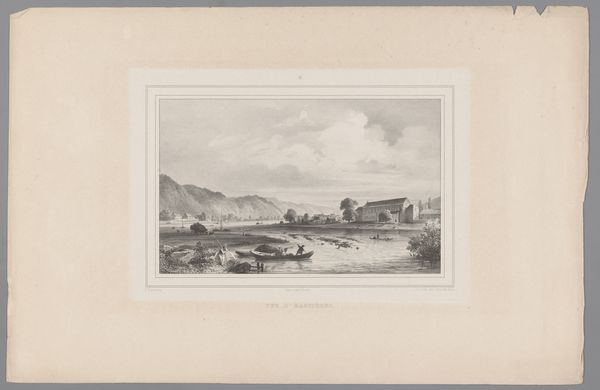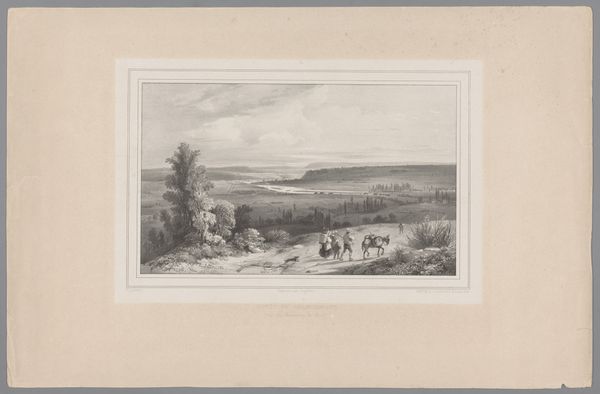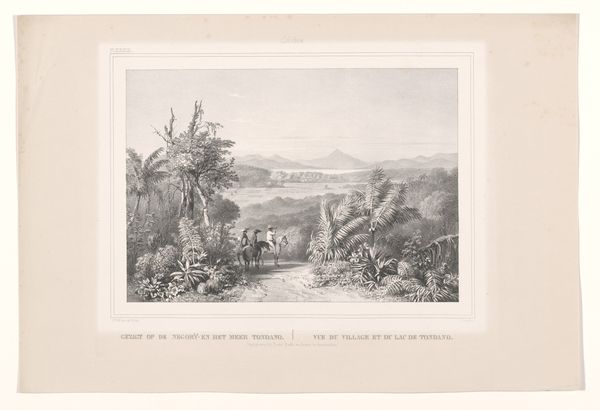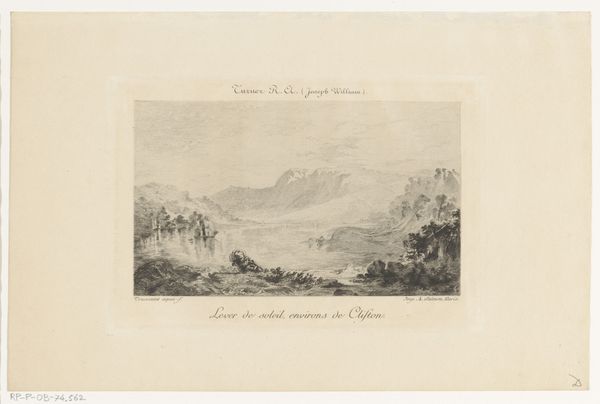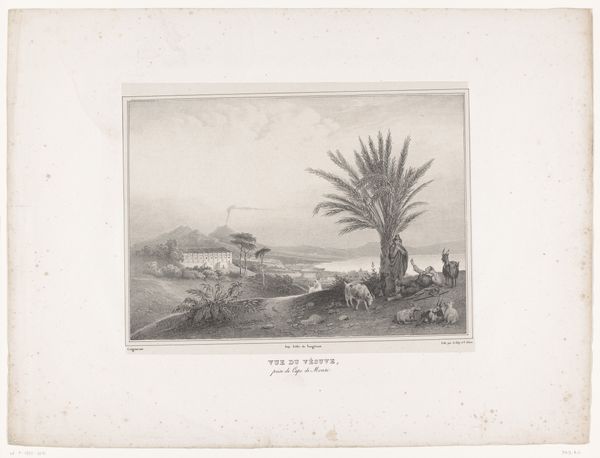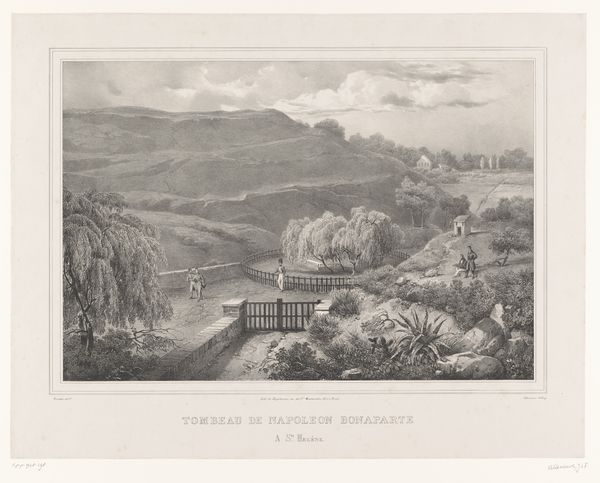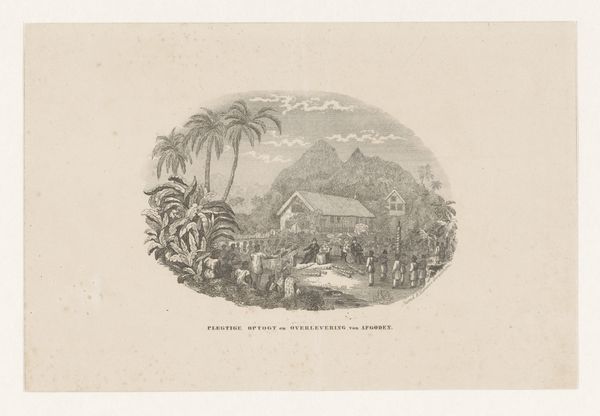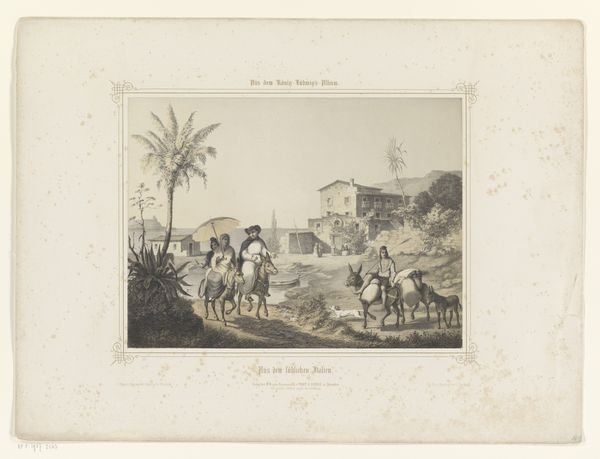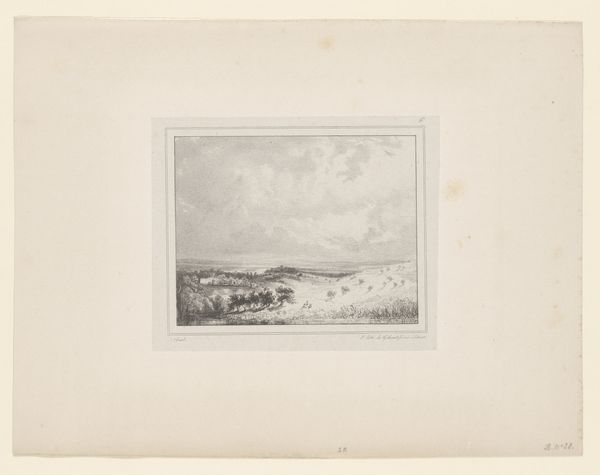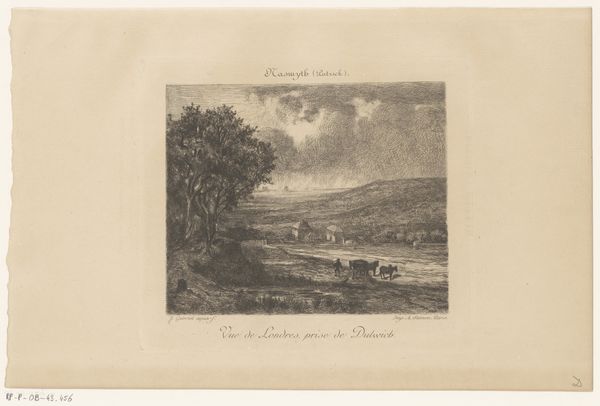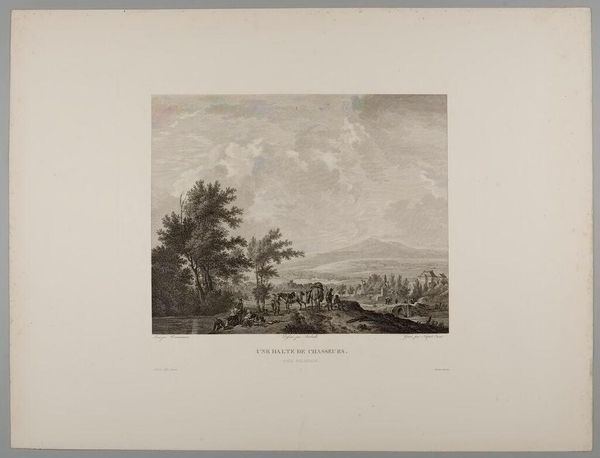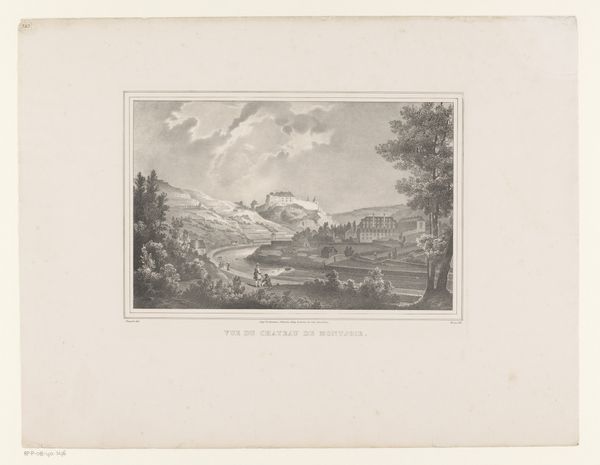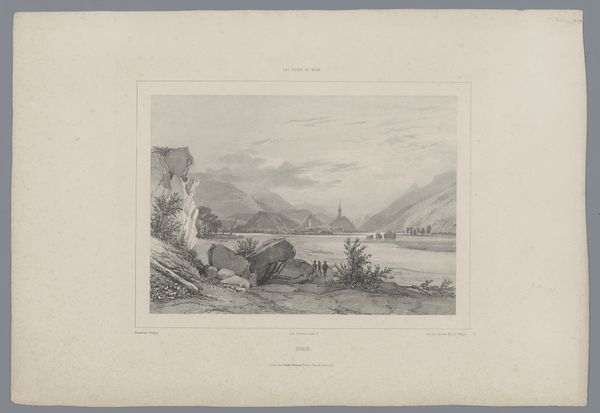
Dimensions: height 438 mm, width 593 mm
Copyright: Rijks Museum: Open Domain
August Löffler created this print of the Sea of Tiberias in Palestine using a technique called steel engraving. Steel engraving was a popular method for mass-producing images in the 19th century. Unlike earlier copper engravings, steel plates were much harder, so they could be used to print far more copies before wearing down. Look closely, and you can see the incredible fineness of the lines, which capture the scene’s topographical detail. This was achieved by using specialized tools to cut into the polished steel surface. The plate would then be inked, and the surface wiped clean, leaving ink only in the engraved lines. Finally, the image was transferred to paper under high pressure. While steel engraving allowed for the widespread dissemination of images, it also required a high degree of skill and specialized knowledge. These prints helped to shape European perceptions of the Middle East, offering a glimpse into a distant land. But remember, the viewpoint offered here is mediated by industrial processes, and by the cultural values of 19th century Europe. By considering the materials and methods used, we can gain a deeper understanding of both the image and its historical context.
Comments
No comments
Be the first to comment and join the conversation on the ultimate creative platform.
